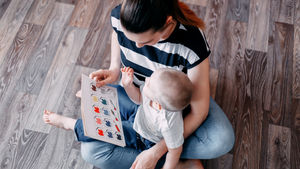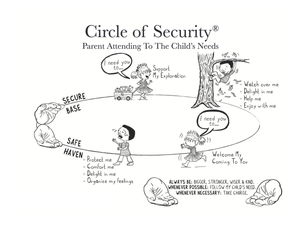Tips to Encourage Toddler Talking

Key points
- Children learn through imitation – it’s important they hear people around them talking.
- Children also learn when parents interpret their cues and attach words to them.
- Labelling feelings, objects and actions helps children learn to talk.
- Everyday repetition helps children to understand and copy new words.
- Child led play helps to support language development.
Your toddler can teach you!
Learning to talk can take many hours of practice and repetition. Even from birth, babies are hard wired to seek connection. Children learn how to be social by seeing and hearing how we connect with each other, which is why spending time with our young children is so valuable.
Science has shown …
Even in the early moments after a baby’s birth, they try to get their parent’s attention and learn ways to create a relationship. As they grow to be toddlers, their behaviours in engaging with others become even more finely developed.
When they first learn to talk, babies make lots of babbles and cooing sounds. Gradually, they learn to practice early language by saying ‘mama’, ‘dada’ and ‘bubba’. Joining the vowel sounds – a, e, i, o, u with consonants is a skill which can come more easily to some babies than others. What are, at the start, simple sounds, become words during the toddler years. Between the ages of 2-3 years, most toddlers have learned to speak in 2–3-word sentences and may have as many as 1,000 words in their vocabulary.
What are some ways I can help my toddler learn to talk?
Get down to your toddler’s level so they can see you. Encourage them to turn to you - this is also called being ‘face to face’. Being on the same level means that you and your young child can really see each other, with a straight gaze, rather than always relying on one of you looking up (usually the toddler) and one looking down (usually the parent).
Look at your toddler’s face when they’re:
- In their highchair or sitting at the table.
- When you’re giving them cuddles.
- When you want their attention.
- When they’re eating.
- When they’re playing.
Other tips
Try positioning a chair beside your toddler’s cot or bed when they’re settling. If you look through the cot rails or directly at them, rather than from a standing position, you’ll be more at their level.
Look for your toddler’s non-verbal cues. This means they’ll be trying to communicate with you by using their body and face. Even before your toddler learns to say many clear words, it’s important you talk to them so they learn what’s involved in talking and forming words.
Look and respond to your toddler when they
- Seem excited by something, are reaching for a toy or your hands.
- Are looking for you.
- Are protesting and need your help to calm. Toddlers often need their parent’s support to regulate their emotions or ‘big feelings’.
- Are smiling or showing other facial expression.
- Seem interested in something that’s happening. Remember, toddlers are curious and being interested in the world and its people helps to support their development.
Let your toddler lead the interaction
Over many years, there’s been lots of evidence to support child-led play. When parents watch and listen to their child, this supports small people in feeling their needs are important. Of course, there’s times when routines and structure need to be followed and it’s not possible for children to always have a say in how the day flows. But during play especially, there’s value for children in being the ones ‘in charge’.
- Wait for your child to start an interaction with you. The more you engage and teach your toddler that you’re fun, the more they’ll want your company.
- Try not to always be the first one to communicate. Even though your child is little and can’t have conversations with you, they’ll be communicating in other ways.
- Do some ‘back and forth’ communication. This means you both take turns with toys, making up little games and just spending time together.
- Sit comfortably in the pauses when their eyes are communicating with their brain. Sending those messages along their neural pathways helps to support their overall development.
- Nod and smile at your toddler.
- Ask them questions about what they’d like. Speaking with different tones and intonations in your own voice will help your toddler to learn about language.
- Use your own facial expressions to show your delight in them.
- Be prepared to wait around 10 seconds for your child to respond to things you’re pointing at.
- Stay focused on your toddler. Remind yourself to be mindful and in the moment.
Did you know?
- Children with language delays need to be exposed to a word at least 6 times more than children without language delays.[1]
- One of the early signs of hearing loss is speech delay.
- Children who have repeated ear infections are at a higher risk of having speech delays.
- It helps when parents don’t ask their child too many questions. Instead, making more comments than asking questions helps to support language development.
- Experts recommend no screen time for children under two years of age, other than video chatting.
Top tips for supporting your child in learning to talk
Be sensitive to your child’s cues. Follow their lead when you can and try to work out what they want.
Be patient. As parents, we all have a tendency to jump in first and try to organise our children’s world. But often our most important ‘work’ is in the pause and silence between doing things. Guide and then wait a little, offer choices and then wait again.
With practice, you’ll learn how to let your child fill the silences.
Try not to do too much at once if you’re trying something new with your child. There can be value in making a plan and sticking to it. So, if you’re trying to be more ‘tuned in’, being more patient or reading books and stories every day, be patient as your child learns and feels secure with their new routine.
5 top tips about learning to talk
- Girls often seem to develop more quickly than boys.
- First born children tend to develop language skills more quickly than younger children.
- Children who attend an early childhood education and care service with others, often talk at an earlier age.
- There can be periods of time when there seems to be slower development and then children ‘catch-up’.
- Being read to every day from birth, helps to support language development. Books, stories, rhymes, songs, nursery rhymes and general every day chatting helps to support an environment which is rich in language.
If you’re worried about your toddler’s language development:
- Speak with your Child Health Nurse and/or GP.
- Ask for a referral to a speech pathologist who is experienced in working with children. Their assessment may be useful if only for reassurance.
- Consider getting your child’s hearing checked.
About the Author:
Written for Safe Sleep Space by Jane Barry. Jane has qualifications in general, paediatric, immunisation, midwifery and child health nursing. She holds a Bachelor Degree in Applied Science (Nursing) and has almost 35 years specialist experience in child health nursing. She is a member of a number of professionally affiliated organisations including AHPRA, The Australasian Medical Writer’s Association and Australian College of Children and Young People’s Nurses.
References
https://raisingchildren.net.au/toddlers/play-learning/play-toddler-development/talking-play-toddlers
https://www.hearing.com.au/Hearing-loss/Children-young-adults
[1] https://www.goldcoast.health.qld.gov.au/our-services/childrens-services/community-child-health/talk-me/early-language-strategies/lesson-5
- Tags: communication toddler








